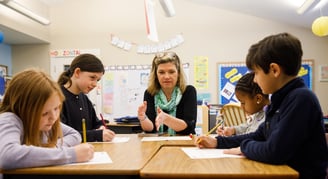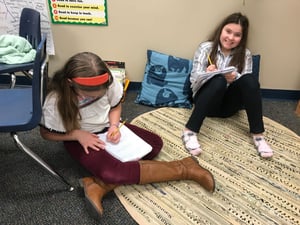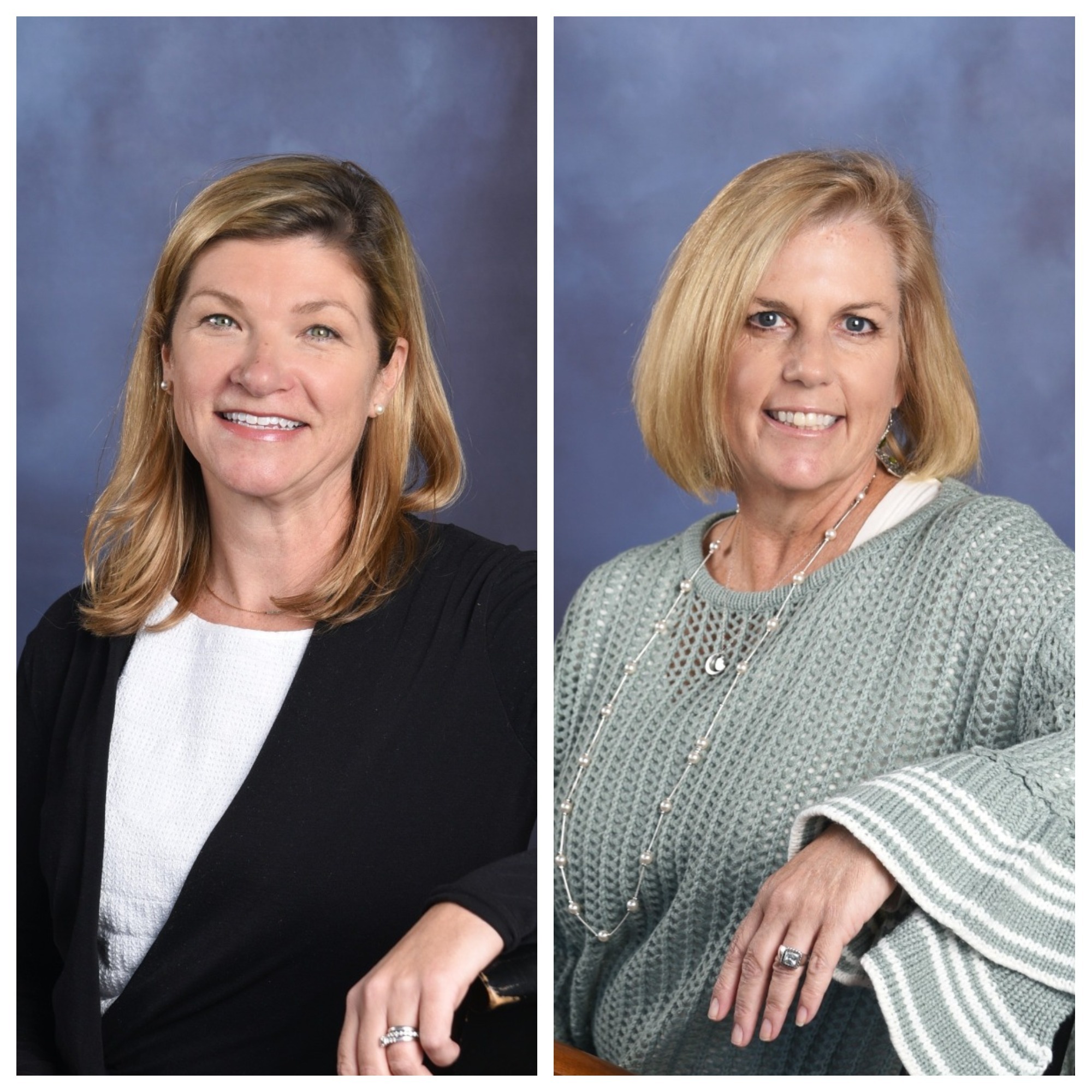The schedule says “language arts,” but, at first glance, you might think the fourth-grade class looks more like they’re having recess than writing. Students are scattered around the room and spilling into the hallway, happily chatting in pairs, drawing pictures, sticking and re-sticking multi-colored Post-Its on bright yellow paper, or laughing uproariously at a story being told by a teacher. But, believe it or not, this is what writing looks like in our classes! This past summer we traveled all the way to Barcelona, Spain and joined nearly 200 other teachers from all over the world at a summer writing institute created by Columbia University’s Teachers College Reading & Writing Project. The week-long training introduced us to new ways to think about, talk about, and teach about writing, and our classes at Sanford School haven’t been the same since. Now when we approach writing lessons we think about how we’ll support the three different types of communication that we want to see happening throughout the class: teacher-to-student, student-to-student, and student-to-self.
Teacher-to-Student Communication
 We model new skills at the beginning of a lesson, conference with students throughout the writing process, and provide feedback that is immediate and actionable. Modeling can range from teaching a targeted mini-lesson on specific topics in their “toolbox,” like foreshadowing, character development, or cliffhangers to taking on the role of storyteller and actually letting students listen to a tale that uses the tool being discussed. Conferencing and providing feedback go hand-in-hand in our writing classes. Throughout the writing process—from brainstorming all the way to the final draft—we are constantly pulling students individually and in groups to check in on their writing. During these conferences, we give quick, in the moment assessments and provide feedback that the kids can apply immediately. Rather than writing pages of comments next to the final grade—when it’s too late for the student to do anything differently—we give immediate feedback to what students are doing at that time.
We model new skills at the beginning of a lesson, conference with students throughout the writing process, and provide feedback that is immediate and actionable. Modeling can range from teaching a targeted mini-lesson on specific topics in their “toolbox,” like foreshadowing, character development, or cliffhangers to taking on the role of storyteller and actually letting students listen to a tale that uses the tool being discussed. Conferencing and providing feedback go hand-in-hand in our writing classes. Throughout the writing process—from brainstorming all the way to the final draft—we are constantly pulling students individually and in groups to check in on their writing. During these conferences, we give quick, in the moment assessments and provide feedback that the kids can apply immediately. Rather than writing pages of comments next to the final grade—when it’s too late for the student to do anything differently—we give immediate feedback to what students are doing at that time.

Student-to-Student Communication
This is an effective strategy to allow peer feedback to improve student writing. When students are with partners who they like and trust, they are comfortable opening up about their ideas and taking risks in their writing. We are very intentional when building partnerships because we want both students to enjoy themselves while they’re learning with each other.
Student-to-Self Communication
Teaching students to reflect on their own work is another critical component of every writing unit. Whether through conversations or rubrics, we always make sure that students know what their goals are and are taking the time to think about their progress toward that goal and the end result. While most students are comfortable with the idea of using a rubric to assess a finished piece, it can be more difficult to encourage them to reflect and give feedback to themselves while they’re still writing. When students are in the midst of the writing process, we’ve found particular success with using hands-on activities to help them think through the structure of their writing. For example, we often have students storyboard using Post-Its. They write each event on a different story and then experiment with changing the sequence of a story by literally moving that event to a new place on the page. This kind of tactile activity can help students consider how the order of events can change the feel of the story, and sometimes lead to re-evaluating whether the initial plan for the story is still what they want to do. For example, instead of leading up to the action, what if the action happened right at the beginning of the story?
Classroom Integration
This past year has been an exciting one in the fourth grade in part because of the new approach we’ve taken to teaching writing. Our students have become engaged writers who enthusiastically learn new skills, confidently apply them to their own work, and thoughtfully give and accept feedback throughout the writing process. Because of multiple layers of communication—teacher-to-student, student-to-student, and student-to-self—we are able to energize ourselves and our students as we all continue to develop our writing abilities! At Sanford, we are able to integrate the best learning strategies for our students to provide the best learning experiences.
Susan Bachtle's continual commitment to professional development in order to consistently improve her craft is applauded and admired by all who know her. She was invited by the esteemed Gates Foundation to attend meetings in Seattle and Washington, D.C. focused on the future of education in our country. Sue also serves as an ambassador for Gynzy, an interactive SmartBoard software company that provides state of the art instructional tools to teachers and Osmo, a groundbreaking system that fosters social intelligence and creative thinking on the iPad. Currently, Sue teaches 4th Grade at Sanford School.
Missy Bloom received a bachelor’s degree from the University of Delaware and completed graduate coursework at the University of Pennsylvania, Wilmington University, the University of Delaware, and Columbia University. Prior to accepting her current role of teaching 4th Grade at Sanford School, she was chosen as the ‘1997-1998 Teacher of the Year at Wilmington Manor Elementary. Missy believes that the best learning environment is one that generates a spirit of cooperation and respect, and she incorporates that idea into her classroom through consistent use of mindfulness activities, Responsive Classroom techniques, and brain breaks.
See Also: Five Advantages of Personalized Learning









